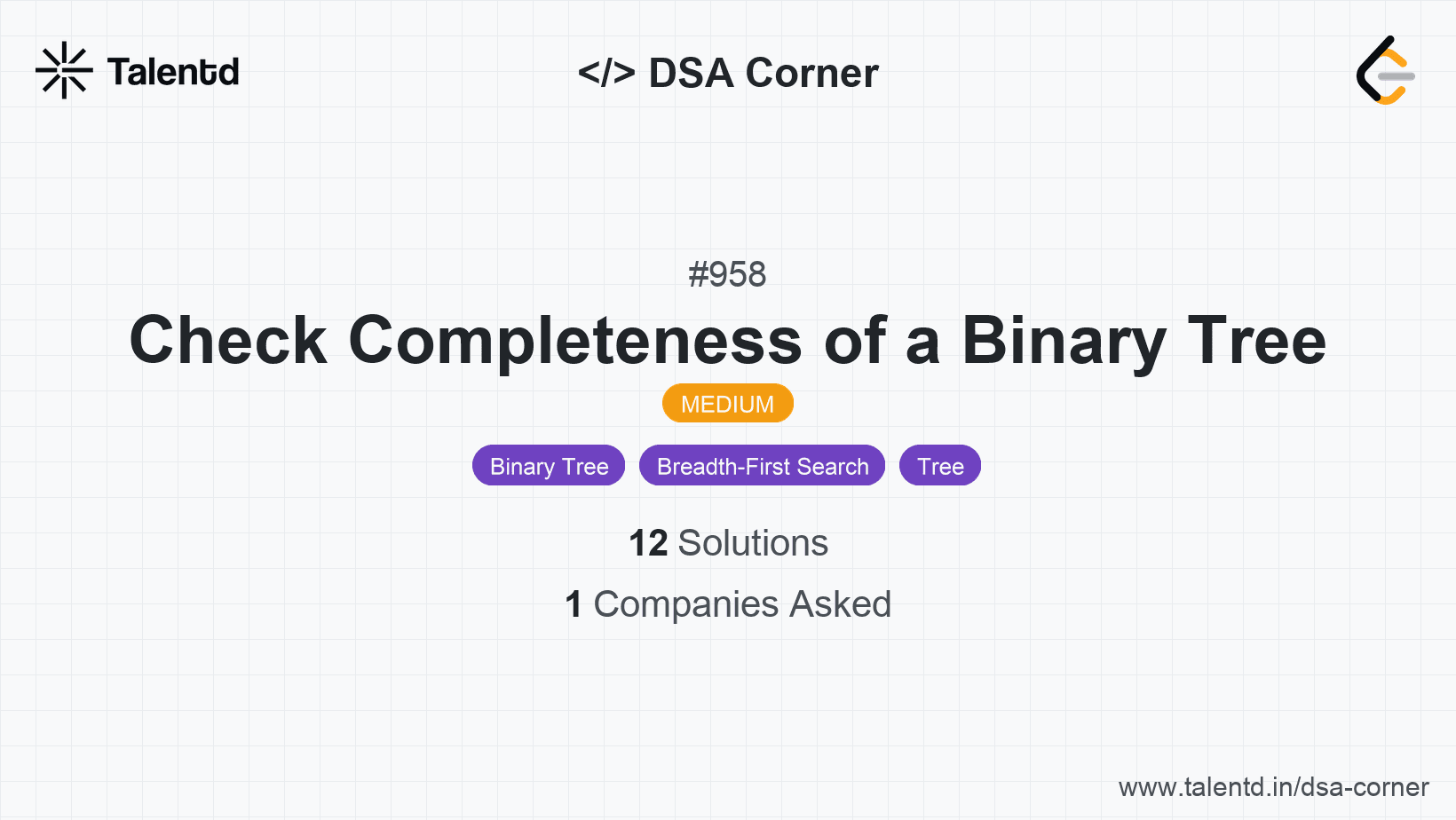
Sponsored
Sponsored
This approach uses a level-order traversal technique with the help of a queue to check if the binary tree is complete. In a complete binary tree, once a null node is encountered while doing a level order traversal, all subsequent nodes must also be null to satisfy completeness.
Time Complexity: O(n), where n is the number of nodes in the tree. We traverse each node once.
Space Complexity: O(n), where n is the number of nodes, used for the queue storage.
1#include <stdio.h>
2#include <stdlib.h>
3#include <stdbool.h>
4
5struct TreeNode {
6 int val;
7 struct TreeNode *left;
8 struct TreeNode *right;
9};
10
11struct QueueNode {
12 struct TreeNode* node;
13 struct QueueNode* next;
14};
15
16struct Queue {
17 struct QueueNode* front;
18 struct QueueNode* rear;
19};
20
21struct Queue* createQueue() {
22 struct Queue* q = (struct Queue*)malloc(sizeof(struct Queue));
23 q->front = q->rear = NULL;
24 return q;
25}
26
27void enqueue(struct Queue* q, struct TreeNode* node) {
28 struct QueueNode* temp = (struct QueueNode*)malloc(sizeof(struct QueueNode));
29 temp->node = node;
30 temp->next = NULL;
31 if (q->rear == NULL) {
32 q->front = q->rear = temp;
33 return;
34 }
35 q->rear->next = temp;
36 q->rear = temp;
37}
38
39struct TreeNode* dequeue(struct Queue* q) {
40 if (q->front == NULL)
41 return NULL;
42 struct QueueNode* temp = q->front;
43 q->front = q->front->next;
44 if (q->front == NULL)
45 q->rear = NULL;
46 struct TreeNode* node = temp->node;
47 free(temp);
48 return node;
49}
50
51bool isQueueEmpty(struct Queue* q) {
52 return q->front == NULL;
53}
54
55bool isCompleteTree(struct TreeNode* root) {
56 if (root == NULL) return true;
57 struct Queue* q = createQueue();
58 enqueue(q, root);
59 bool encounteredNull = false;
60 while (!isQueueEmpty(q)) {
61 struct TreeNode* current = dequeue(q);
62 if (current == NULL) {
63 encounteredNull = true;
64 } else {
65 if (encounteredNull) return false;
66 enqueue(q, current->left);
67 enqueue(q, current->right);
68 }
69 }
70 return true;
71}The C implementation utilizes a custom queue for level-order traversal. We maintain a flag 'encounteredNull' to detect when a null node appears. If any non-null node is found after a null node has been dequeued, we return false immediately, indicating the tree is not complete.
This approach utilizes depth-first search to gather information regarding the number of nodes and their indices. Using these, we check the compactness of the tree at each level to ensure all nodes fit the complete binary tree property.
Time Complexity: O(n).
Space Complexity: O(n), due to recursive stack usage.
1function
JavaScript uses DFS after counting nodes to ensure node indices stay within a plausible complete binary tree range.